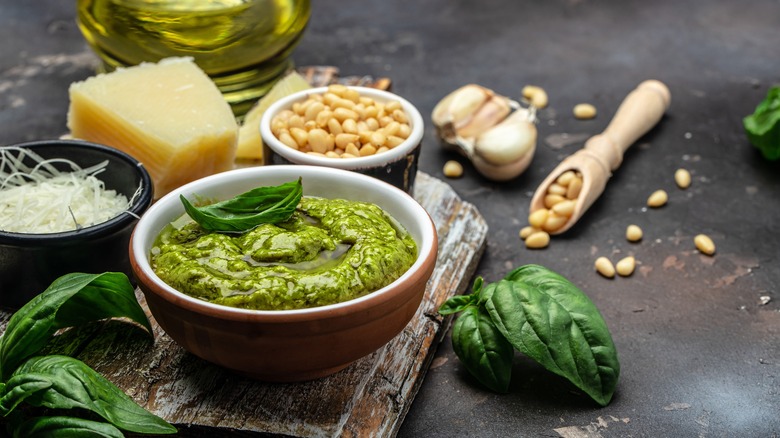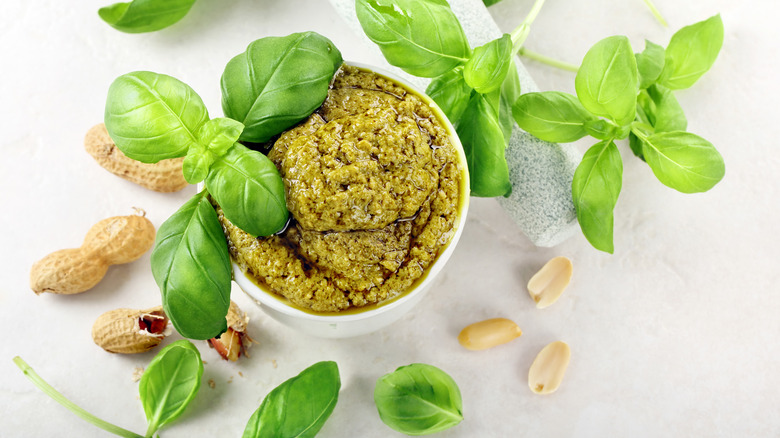What To Know Before You Swap Pine Nuts For Peanuts In Pesto
A classic bright and fresh basil pesto is made with pine nuts, basil, parmesan, garlic, and some salt and pepper. However, if you don't have any of these nuts in the pantry or just find them to be too expensive, there are plenty of pine nut substitutes you can use for pesto, including peanuts. While it may seem like an odd choice, peanuts (which are actually a legume) can add an interesting flavor to your pesto, albeit more reminiscent of peanut butter if you aren't judicious with the amount you use.
There are a few things to keep in mind if you choose to swap out pine nuts for peanuts. The first is that you want to use raw peanuts. Roasted, salted, candy-coated peanuts are all very tasty, but they will overpower the flavor of a pesto, giving it an overly sweet or salty taste that may not work well with your other ingredients. Raw peanuts have more of a bland, pea-like taste, but that bland flavor is also what makes them the best choice for a peanut pesto.
Choose the right herbs and spices
Additionally, substituting peanuts for pine nuts is not going to be a 1:1 ratio; Less is more with peanuts. Consider trying half as many peanuts as you would use pine nuts. You can always add a little more until you hit the taste you prefer. When it comes to which herbs and spices to use with peanuts, you may want to consider adding a spicy element to balance the sweetness. Some crumbled dried chiles or red pepper flakes can add a nice kick without becoming overwhelming.
You can also change up the herbs you are using for a peanut pesto to create the depth and layer of flavors that are so important when building this pasty sauce. Basil is a go-to herb but it is not the only option for pesto. In fact, you may want to use a combination of cilantro, mint, and Thai basil with your peanuts for a pesto that echoes the flavors of Thai dishes.

